-

In today’s dynamic marketplace, maintaining a strong and relevant brand identity is crucial for businesses of all sizes. However, over time, brands can become outdated, lose their connection with the target audience, or fail to reflect the company’s evolution. This is where rebranding comes into play. What is the Rebranding Strategy? Essentially, rebranding is a comprehensive strategy that involves repositioning a brand in the market. It’s not just about a new logo or tagline; it’s about revamping the entire brand experience to better align with your current goals, target audience, and market landscape. There are different types of rebranding, depending on the extent of change desired. Evolutionary rebranding involves making minor adjustments to the existing brand identity, such as refining the logo or messaging. Revolutionary rebranding, on the other hand, is a complete overhaul, encompassing everything from the brand name and visual elements to the core values and messaging. The goals of rebranding can be diverse, including: How Do You Revamp a Brand Identity? A successful rebranding strategy requires careful planning and execution. Here are the key steps involved: 1. Conduct Market Research: 2. Define Brand Values and Mission: 3. Develop a New Brand Identity: 4. Implement the Rebranding Across All Touchpoints: 5. Monitor and Measure Results: Key Elements of Rebranding: For a rebranding strategy to be successful, it must incorporate several crucial elements: Conclusion In today’s competitive landscape, rebranding can be a powerful tool for businesses looking to revitalize their brand identity, reconnect with their target audience, and achieve their growth objectives. By following a strategic approach and focusing on the key elements mentioned above, businesses can successfully navigate the rebranding process and emerge with a stronger, more relevant brand that resonates with their target audience and drives long-term success. Considering a rebranding effort for your business? Webchirpy offers comprehensive rebranding services to help you develop a strong and impactful brand identity that reflects your unique value proposition and resonates with your target audience. From logo design and messaging development to website creation and marketing materials, our team of experienced professionals can guide you through every step of the rebranding process.
Rebranding: Strategies for Revitalizing Your Brand Identity
In today’s dynamic marketplace, maintaining a strong and relevant brand identity is crucial for businesses of all sizes. However, over time, brands can become outdated, lose their connection with the target audience, or fail to reflect the company’s evolution. This is where rebranding comes into play.
What is the Rebranding Strategy?
Essentially, rebranding is a comprehensive strategy that involves repositioning a brand in the market. It’s not just about a new logo or tagline; it’s about revamping the entire brand experience to better align with your current goals, target audience, and market landscape.
There are different types of rebranding, depending on the extent of change desired. Evolutionary rebranding involves making minor adjustments to the existing brand identity, such as refining the logo or messaging. Revolutionary rebranding, on the other hand, is a complete overhaul, encompassing everything from the brand name and visual elements to the core values and messaging.
The goals of rebranding can be diverse, including:
- Enhancing brand awareness and recognition.
- Attracting new customers and expanding market reach.
- Reflecting changes in the company’s mission, vision, or values.
- Differentiating from competitors and establishing a unique brand proposition.
How Do You Revamp a Brand Identity?
A successful rebranding strategy requires careful planning and execution. Here are the key steps involved:
1. Conduct Market Research:
- Understand your target audience: Analyze their demographics, needs, and expectations.
- Conduct competitor analysis: Identify your competitors’ strengths and weaknesses, and how your brand can differentiate itself.
- Evaluate brand perception: Assess how your current brand is perceived by your target audience and stakeholders.
2. Define Brand Values and Mission:
- Establish your core values: These are the fundamental principles that guide your company’s actions and decision-making.
- Craft a clear and concise mission statement: This statement should articulate your company’s purpose and what it strives to achieve.
3. Develop a New Brand Identity:
- Create a unique visual identity: This includes designing a new logo, color palette, typography, and other visual elements that are consistent and memorable.
- Develop compelling brand messaging: Craft clear, concise, and persuasive messaging that resonates with your target audience and effectively communicates your brand’s value proposition.
4. Implement the Rebranding Across All Touchpoints:
- Update your website, marketing materials, packaging, and social media presence.
- Ensure consistency across all communication channels.
- Communicate the rebranding to your employees, partners, and customers.
5. Monitor and Measure Results:
- Track key metrics such as brand awareness, website traffic, customer engagement, and sales.
- Analyze the results to assess the effectiveness of the rebranding efforts and make necessary adjustments.
Key Elements of Rebranding:
For a rebranding strategy to be successful, it must incorporate several crucial elements:
- Clarity: The brand message should be clear, concise, and easily understood by the target audience.
- Consistency: Maintaining a consistent brand image across all platforms is essential for building brand recognition and trust.
- Differentiation: A strong brand stands out from the competition and offers a unique value proposition.
- Customer Focus: Understanding and catering to the needs and expectations of your target audience is paramount for building lasting relationships.

Conclusion
In today’s competitive landscape, rebranding can be a powerful tool for businesses looking to revitalize their brand identity, reconnect with their target audience, and achieve their growth objectives. By following a strategic approach and focusing on the key elements mentioned above, businesses can successfully navigate the rebranding process and emerge with a stronger, more relevant brand that resonates with their target audience and drives long-term success.
Considering a rebranding effort for your business? Webchirpy offers comprehensive rebranding services to help you develop a strong and impactful brand identity that reflects your unique value proposition and resonates with your target audience. From logo design and messaging development to website creation and marketing materials, our team of experienced professionals can guide you through every step of the rebranding process.
- Enhancing brand awareness and recognition.
-

Landing pages, specifically designed web pages tailored to targeted audiences. When effectively combined with Google Ads, these pages can significantly boost your reach and ultimately drive conversions. Crafting Compelling Landing Pages 1. Align with Google Ads: Ensure your landing page content directly reflects the promises made in your Google Ads. This creates a seamless user experience, fostering trust and increasing the likelihood of conversion. Remember, relevance is key. 2. Headline that Hooks: Your headline is the first impression, so make it count. Craft a clear, concise, and benefit-driven headline that captures attention and accurately reflects the value proposition. Utilize strong verbs and highlight the unique selling points of your offering. 3. Compelling Copy that Converts: Beyond the headline, your landing page copy should be persuasive and informative. Explain the benefits of your product or service in a clear and concise manner, addressing the specific needs and pain points of your target audience. Use bullet points, short paragraphs, and visuals to break up text and enhance readability. 4. Visual Appeal: High-quality visuals, such as images and videos, can significantly enhance the impact of your landing page. Choose visuals that are relevant to your offering and resonate with your target audience. They should complement your copy and reinforce your message. 5. Clear Call to Action (CTA): Tell your visitors what you want them to do next. Whether it’s signing up for a free trial, making a purchase, or downloading an ebook, your CTA should be prominent, actionable, and easy to understand. Use strong verbs and contrasting colors to make it stand out. Optimizing for Conversions 1. Mobile-friendliness: With the increasing dominance of mobile browsing, ensuring your landing page is optimized for all devices is paramount. This includes responsive design, fast loading times, and clear, easy-to-click CTA buttons. 2. A/B Testing: Don’t be afraid to experiment! A/B testing different elements of your landing page, such as headlines, visuals, and CTA positioning, can help you identify the most effective combination for driving conversions. 3. Social Proof: Leverage the power of social proof to build trust and credibility. Include customer testimonials, case studies, or client logos on your landing page to demonstrate the value you deliver. 4. Remove Distractions: Keep your landing page focused on the singular goal of conversion. Avoid unnecessary navigation elements, intrusive pop-ups, or irrelevant information that might distract visitors from taking the desired action. Enhancing Landing Page Experience in Google Ads 1. Quality Score: Google Ads assigns a Quality Score to your keywords and landing pages, which directly impacts your ad ranking and cost-per-click. Ensure your landing page content aligns with your ad copy and keywords to achieve a high-Quality Score, benefiting from improved ad visibility and potentially lower costs. 2. Ad Extensions: Utilize ad extensions to provide additional information and functionalities within your Google Ads, such as location extensions, call extensions, or site link extensions. This can enhance the user experience and encourage clicks. 3. Landing Page Relevance: Google prioritizes user experience. When a user clicks on your ad, they expect to land on a page directly relevant to the advertised product or service. Maintaining this relevance improves your campaign performance and user satisfaction. Investing in Expertise Building high-performing landing pages and managing effective Google Ads campaigns requires expertise and ongoing optimization. Partnering with a professional service provider like Webchirpy can ensure your campaigns are strategically crafted, meticulously managed, and continuously optimized for maximum impact. Our team of specialists possesses the necessary skills and experience to create compelling landing pages, develop targeted Google Ads campaigns, and deliver measurable results, ultimately helping you attract more customers and achieve your business goals. Contact us today to discuss your specific needs and explore how our expertise can help you leverage the power of landing pages and Google Ads to achieve remarkable results.
Building Landing Pages for Businesses
Landing pages, specifically designed web pages tailored to targeted audiences. When effectively combined with Google Ads, these pages can significantly boost your reach and ultimately drive conversions.

Crafting Compelling Landing Pages
1. Align with Google Ads: Ensure your landing page content directly reflects the promises made in your Google Ads. This creates a seamless user experience, fostering trust and increasing the likelihood of conversion. Remember, relevance is key.
2. Headline that Hooks: Your headline is the first impression, so make it count. Craft a clear, concise, and benefit-driven headline that captures attention and accurately reflects the value proposition. Utilize strong verbs and highlight the unique selling points of your offering.
3. Compelling Copy that Converts: Beyond the headline, your landing page copy should be persuasive and informative. Explain the benefits of your product or service in a clear and concise manner, addressing the specific needs and pain points of your target audience. Use bullet points, short paragraphs, and visuals to break up text and enhance readability.
4. Visual Appeal: High-quality visuals, such as images and videos, can significantly enhance the impact of your landing page. Choose visuals that are relevant to your offering and resonate with your target audience. They should complement your copy and reinforce your message.
5. Clear Call to Action (CTA): Tell your visitors what you want them to do next. Whether it’s signing up for a free trial, making a purchase, or downloading an ebook, your CTA should be prominent, actionable, and easy to understand. Use strong verbs and contrasting colors to make it stand out.
Optimizing for Conversions
1. Mobile-friendliness: With the increasing dominance of mobile browsing, ensuring your landing page is optimized for all devices is paramount. This includes responsive design, fast loading times, and clear, easy-to-click CTA buttons.
2. A/B Testing: Don’t be afraid to experiment! A/B testing different elements of your landing page, such as headlines, visuals, and CTA positioning, can help you identify the most effective combination for driving conversions.
3. Social Proof: Leverage the power of social proof to build trust and credibility. Include customer testimonials, case studies, or client logos on your landing page to demonstrate the value you deliver.
4. Remove Distractions: Keep your landing page focused on the singular goal of conversion. Avoid unnecessary navigation elements, intrusive pop-ups, or irrelevant information that might distract visitors from taking the desired action.
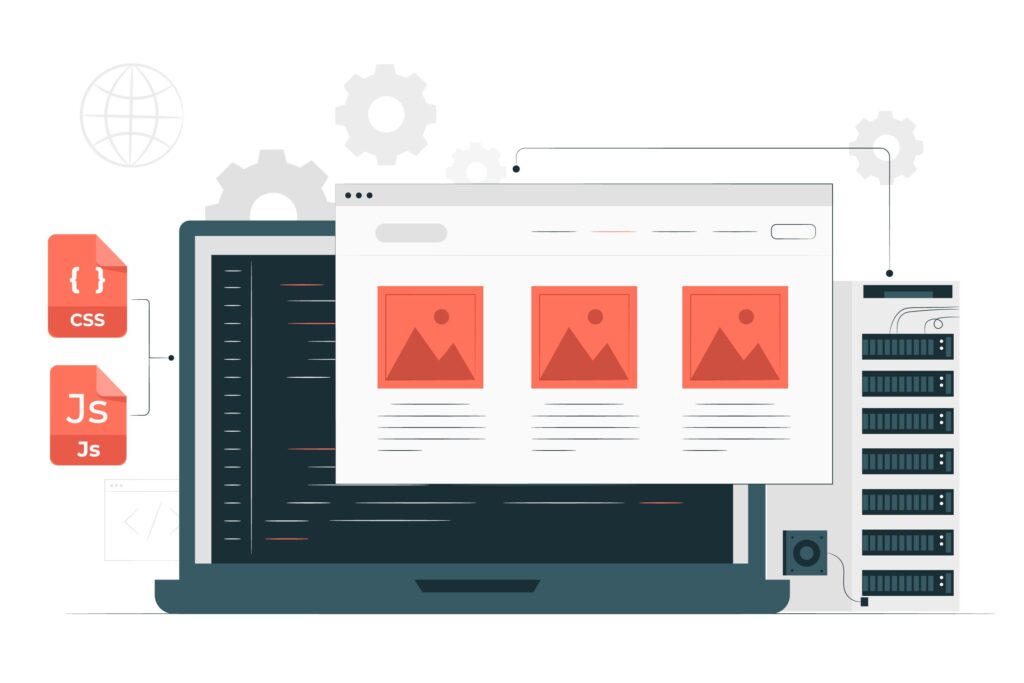
Enhancing Landing Page Experience in Google Ads
1. Quality Score: Google Ads assigns a Quality Score to your keywords and landing pages, which directly impacts your ad ranking and cost-per-click. Ensure your landing page content aligns with your ad copy and keywords to achieve a high-Quality Score, benefiting from improved ad visibility and potentially lower costs.
2. Ad Extensions: Utilize ad extensions to provide additional information and functionalities within your Google Ads, such as location extensions, call extensions, or site link extensions. This can enhance the user experience and encourage clicks.
3. Landing Page Relevance: Google prioritizes user experience. When a user clicks on your ad, they expect to land on a page directly relevant to the advertised product or service. Maintaining this relevance improves your campaign performance and user satisfaction.Investing in Expertise
Building high-performing landing pages and managing effective Google Ads campaigns requires expertise and ongoing optimization. Partnering with a professional service provider like Webchirpy can ensure your campaigns are strategically crafted, meticulously managed, and continuously optimized for maximum impact.
Our team of specialists possesses the necessary skills and experience to create compelling landing pages, develop targeted Google Ads campaigns, and deliver measurable results, ultimately helping you attract more customers and achieve your business goals.Contact us today to discuss your specific needs and explore how our expertise can help you leverage the power of landing pages and Google Ads to achieve remarkable results.
-

In today’s competitive business landscape, a well-designed logo is essential for establishing brand identity and making a lasting impression on your target audience. But how does a simple image become the visual embodiment of your company’s values and aspirations? Let’s delve into the fascinating logo design process, from the initial spark of an idea to the final polished product. Understanding the Brand: The Foundation of a Successful Logo Before embarking on the innovation journey, it’s crucial to gain a deep understanding of the brand you’re representing. This initial phase involves: This initial groundwork establishes a solid foundation for the design direction and ensures the final logo resonates with the brand’s essence. Brainstorming and Sketching: Bringing Ideas to Life With a clear understanding of the brand, the creative process begins. This stage often involves: This is a crucial phase where various options are explored and refined, eventually leading to a selection of promising concepts for further development. Refining and Digitalization: Transforming Ideas into Reality Once promising logo concepts are identified, it’s time to refine them and bring them to life digitally: This stage involves meticulous attention to detail, ensuring the logo is visually appealing, technically sound, and adaptable to various applications. Presentation and Feedback: Collaborative Refinement The next step involves presenting the developed logo options to the client for their feedback and approval. This stage typically involves: Open communication and collaboration during this phase are crucial for ensuring the final logo meets the client’s expectations and effectively represents the brand. Finalization and Delivery: The Culmination of the Design Journey Once the final logo is approved, it’s time to prepare it for various applications: This final stage ensures the logo is delivered in a usable format and provides clear instructions for consistent brand representation across all marketing materials. Partnering with Webchirpy for Exceptional Logo Design Creating a truly impactful logo requires expertise, creativity, and a deep understanding of brand identity. Webchirpy’s team of experienced designers possesses the skills and passion to guide you through every step of the logo design process, from initial concept development to final delivery. Webchirpy‘s logo design service offers a collaborative and personalized approach, ensuring your brand receives a unique and memorable visual identity that resonates with your target audience and effectively communicates your brand’s essence. Contact us today and embark on a journey to create a logo that will become the cornerstone of your brand’s success.
The Process of Logo Design: From Concept to Final Product
In today’s competitive business landscape, a well-designed logo is essential for establishing brand identity and making a lasting impression on your target audience. But how does a simple image become the visual embodiment of your company’s values and aspirations? Let’s delve into the fascinating logo design process, from the initial spark of an idea to the final polished product.

Understanding the Brand: The Foundation of a Successful Logo
Before embarking on the innovation journey, it’s crucial to gain a deep understanding of the brand you’re representing. This initial phase involves:
- Client discovery: Engaging in open communication with the client to grasp their vision, target audience, brand personality, and desired message.
- Competitive analysis: Research competitors within the industry to identify design trends and potential areas for differentiation.
- Defining brand values: Uncovering the core values and mission that the logo should communicate.
This initial groundwork establishes a solid foundation for the design direction and ensures the final logo resonates with the brand’s essence.
Brainstorming and Sketching: Bringing Ideas to Life
With a clear understanding of the brand, the creative process begins. This stage often involves:
- Brainstorming sessions: Generating a multitude of logo concepts through individual or collaborative exercises. Exploring different styles, fonts, and color palettes to spark creative possibilities.
- Sketching: Translating those ideas into rough sketches, allowing for quick exploration and iteration without getting bogged down in technical details.
This is a crucial phase where various options are explored and refined, eventually leading to a selection of promising concepts for further development.
Refining and Digitalization: Transforming Ideas into Reality
Once promising logo concepts are identified, it’s time to refine them and bring them to life digitally:
- Vector Software: Utilizing design software like Adobe Illustrator to create digital versions of the chosen logo concepts, allowing for precise adjustments and scalability.
- Color exploration: Experiment with different color combinations to ensure the logo evokes the desired emotions and aligns with the brand’s identity.
- Typography selection: Choosing fonts that complement the logo’s design and effectively communicate the brand’s message.
This stage involves meticulous attention to detail, ensuring the logo is visually appealing, technically sound, and adaptable to various applications.
Presentation and Feedback: Collaborative Refinement
The next step involves presenting the developed logo options to the client for their feedback and approval. This stage typically involves:
- Client presentation: Clearly showcasing the different logo options, explaining the design rationale behind each, and addressing any initial questions or concerns.
- Incorporating feedback: Carefully considering the client’s feedback and making necessary adjustments to refine the chosen logo concept.
Open communication and collaboration during this phase are crucial for ensuring the final logo meets the client’s expectations and effectively represents the brand.
Finalization and Delivery: The Culmination of the Design Journey
Once the final logo is approved, it’s time to prepare it for various applications:
- Delivering various file formats: Providing the logo in different file formats (e.g., PNG, JPG, SVG) to ensure it can be used across various platforms and media.
- Creating a style guide: Develop a style guide that outlines the logo’s proper usage, including color specifications, font variations, and any specific usage guidelines.
This final stage ensures the logo is delivered in a usable format and provides clear instructions for consistent brand representation across all marketing materials.

Partnering with Webchirpy for Exceptional Logo Design
Creating a truly impactful logo requires expertise, creativity, and a deep understanding of brand identity. Webchirpy’s team of experienced designers possesses the skills and passion to guide you through every step of the logo design process, from initial concept development to final delivery.
Webchirpy‘s logo design service offers a collaborative and personalized approach, ensuring your brand receives a unique and memorable visual identity that resonates with your target audience and effectively communicates your brand’s essence.
Contact us today and embark on a journey to create a logo that will become the cornerstone of your brand’s success. - Client discovery: Engaging in open communication with the client to grasp their vision, target audience, brand personality, and desired message.
-

To achieve success, you need a strategic marketing plan that effectively reaches your target audience and drives downloads. This comprehensive guide will equip you with the knowledge and actionable steps to propel your mobile app towards visibility and user acquisition. Defining Your Target Audience: The Foundation of Success Before diving into marketing tactics, it’s crucial to understand who your ideal users are. This involves creating a detailed user persona that outlines their demographics, interests, pain points, and tech-savviness. Conducting thorough market research, analyzing user data, and even gathering feedback through surveys and focus groups can be invaluable in building this persona. For instance, if your app caters to fitness enthusiasts, your target audience might be individuals aged 25-45 who are interested in health and wellness. They might be active on social media platforms like Instagram and subscribe to fitness blogs or podcasts. Understanding these characteristics allows you to tailor your marketing messages and channels accordingly. Crafting a Compelling App Store Listing: Your First Impression Your app store listing serves as the digital storefront for your app, making it the first point of contact with potential users. Optimizing this listing is essential to increase discoverability and encourage downloads. Here are some key elements to focus on: Remember, a well-crafted app store listing can significantly impact your download rate. Invest time and effort in creating a listing that effectively communicates the value your app offers. Leveraging Powerful Marketing Channels: Reaching the Right Audience With a defined target audience and optimized app store listing, it’s time to explore various marketing channels to reach them effectively. Here are some key strategies to consider: Additionally, consider exploring paid advertising options like search engine marketing (SEM) or app install campaigns to reach a wider audience. Encouraging Downloads: The Final Push Once potential users discover your app, enticing them to download it becomes crucial. Here are some effective strategies: Furthermore, encourages existing users to become advocates by implementing referral programs or social sharing features within the app. Building a Sustainable Marketing Plan: Beyond Downloads While driving downloads is crucial, retention is equally important for long-term success. Develop a comprehensive marketing plan that extends beyond the initial launch phase and focuses on user engagement and retention. This may involve: By implementing these strategies, you can create a sustainable marketing plan that drives not only downloads but also loyal users who contribute to the long-term success of your mobile app. Conclusion Marketing your mobile app effectively requires a multi-faceted approach that combines audience understanding, strategic outreach, and continuous engagement. By following the steps outlined above and adapting them to your specific app and target audience, you can navigate the competitive mobile landscape and achieve sustainable growth for your app. If you’re considering developing a mobile app, consider partnering with a professional mobile app development and marketing service like Webchirpy.
Marketing Your Mobile App
To achieve success, you need a strategic marketing plan that effectively reaches your target audience and drives downloads. This comprehensive guide will equip you with the knowledge and actionable steps to propel your mobile app towards visibility and user acquisition.

Defining Your Target Audience: The Foundation of Success
Before diving into marketing tactics, it’s crucial to understand who your ideal users are. This involves creating a detailed user persona that outlines their demographics, interests, pain points, and tech-savviness. Conducting thorough market research, analyzing user data, and even gathering feedback through surveys and focus groups can be invaluable in building this persona.
For instance, if your app caters to fitness enthusiasts, your target audience might be individuals aged 25-45 who are interested in health and wellness. They might be active on social media platforms like Instagram and subscribe to fitness blogs or podcasts. Understanding these characteristics allows you to tailor your marketing messages and channels accordingly.
Crafting a Compelling App Store Listing: Your First Impression
Your app store listing serves as the digital storefront for your app, making it the first point of contact with potential users. Optimizing this listing is essential to increase discoverability and encourage downloads. Here are some key elements to focus on:
- Captivating Title: Choose a concise and descriptive title that accurately reflects your app’s purpose and value proposition.
- Engaging Description: Highlight the key features and benefits of your app, addressing the specific needs and pain points of your target audience. Utilize relevant keywords to improve search ranking.
- Visually Appealing Screenshots and Videos: Showcase the app’s interface and functionality through high-quality screenshots and engaging videos.
Remember, a well-crafted app store listing can significantly impact your download rate. Invest time and effort in creating a listing that effectively communicates the value your app offers.
Leveraging Powerful Marketing Channels: Reaching the Right Audience
With a defined target audience and optimized app store listing, it’s time to explore various marketing channels to reach them effectively. Here are some key strategies to consider:
- Social Media Marketing: Utilize platforms frequented by your target audience to share engaging content, promote app features, and run targeted ad campaigns.
- Content Marketing: Create informative blog posts, articles, or videos that address the problems your app solves and establish yourself as a thought leader in your industry.
- App Store Optimization (ASO): Implement keyword research and optimization strategies to improve your app’s ranking in relevant app store searches.
- Influencer Marketing: Partner with relevant influencers in your niche to promote your app to their audience through reviews, tutorials, or sponsored content.
Additionally, consider exploring paid advertising options like search engine marketing (SEM) or app install campaigns to reach a wider audience.
Encouraging Downloads: The Final Push
Once potential users discover your app, enticing them to download it becomes crucial. Here are some effective strategies:
- Offer Incentives: Provide limited-time discounts, bonus features, or exclusive content for new users who download the app.
- Run Contests and Giveaways: Generate excitement and encourage downloads by hosting contests or giveaways centered around your app.
- Utilize Call-to-Action Buttons: Include clear and compelling call-to-action buttons on your website, social media posts, and marketing materials, directing users to download the app.
Furthermore, encourages existing users to become advocates by implementing referral programs or social sharing features within the app.
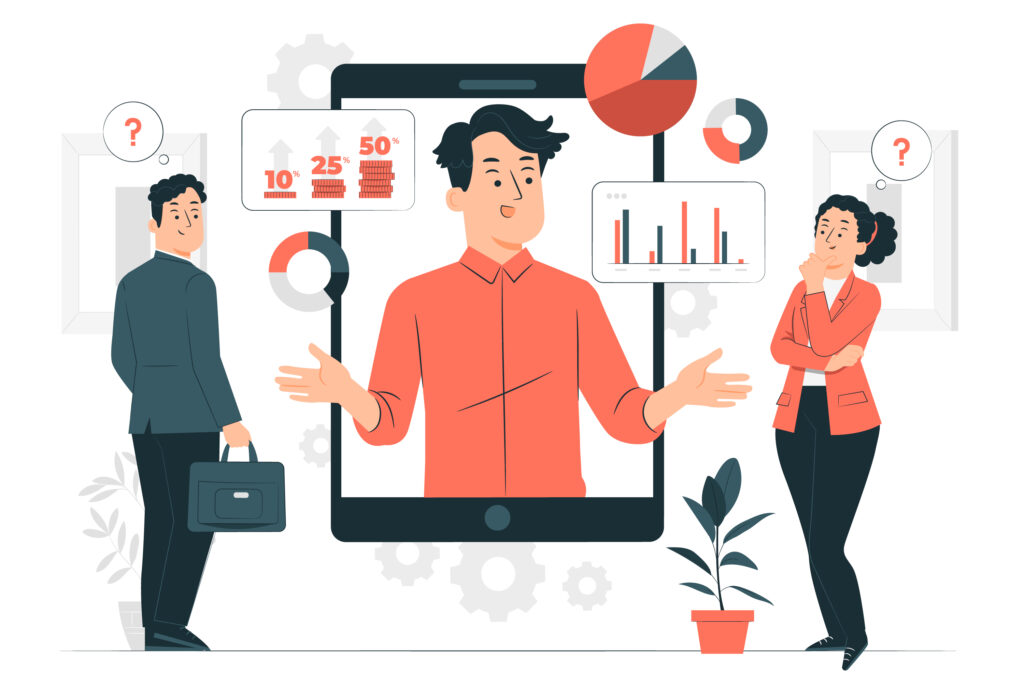
Building a Sustainable Marketing Plan: Beyond Downloads
While driving downloads is crucial, retention is equally important for long-term success. Develop a comprehensive marketing plan that extends beyond the initial launch phase and focuses on user engagement and retention. This may involve:
- Regularly Updating Your App: Address user feedback, fix bugs, and introduce new features to keep users engaged.
- Personalized Communication: Utilize in-app messaging or email marketing to send targeted communication based on user behavior and preferences.
- Community Building: Foster a sense of community around your app by creating online forums or hosting events for users to interact and share experiences.
By implementing these strategies, you can create a sustainable marketing plan that drives not only downloads but also loyal users who contribute to the long-term success of your mobile app.
Conclusion
Marketing your mobile app effectively requires a multi-faceted approach that combines audience understanding, strategic outreach, and continuous engagement. By following the steps outlined above and adapting them to your specific app and target audience, you can navigate the competitive mobile landscape and achieve sustainable growth for your app.
If you’re considering developing a mobile app, consider partnering with a professional mobile app development and marketing service like Webchirpy. - Captivating Title: Choose a concise and descriptive title that accurately reflects your app’s purpose and value proposition.
-
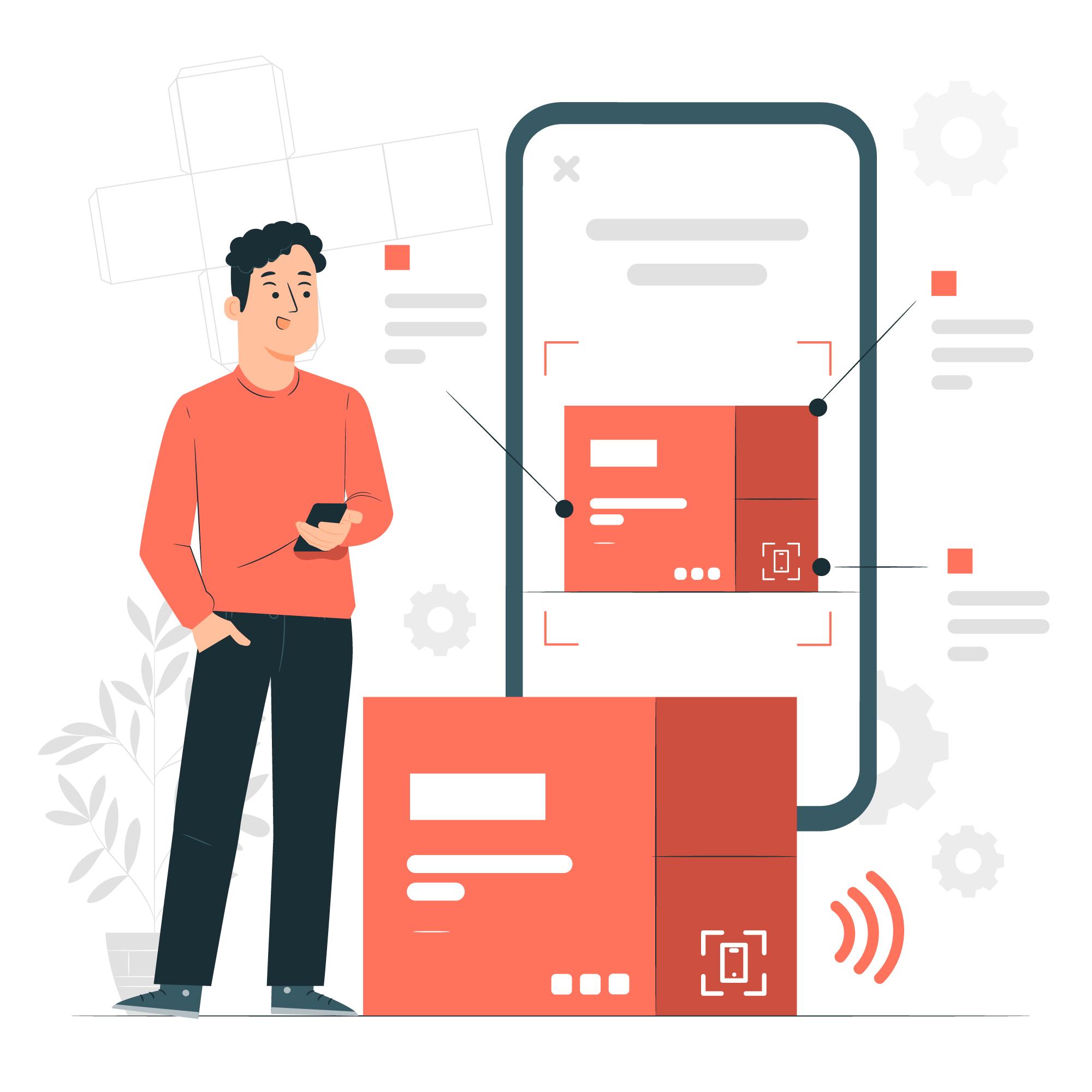
Packaging, often considered a silent salesperson, plays a vital role in capturing consumer attention and influencing purchasing decisions. But how can you ensure your packaging design ignites creativity and effectively conveys your brand message? This blog post delves into the essential elements of print and packaging design, guiding you through the key considerations and strategies to create packaging that resonates with your target audience. The Building Blocks of Effective Packaging Design Packaging design encompasses various components that work together to create a cohesive and impactful experience. Here’s a breakdown of the fundamental elements: 4 Key Considerations for Captivating Packaging Design While aesthetics play a significant role, successful packaging design goes beyond visual appeal. Here are four crucial considerations to keep in mind: Elements that Spark Allure: Making Your Packaging Irresistible Beyond functionality and information, incorporating design elements that evoke emotions and trigger purchase decisions can elevate your packaging to the next level. Here are some tactics to consider: Remember, effective packaging design is a strategic blend of functionality, aesthetics, and emotional connection. By carefully considering these elements and tailoring your design to your target audience and brand identity, you can unlock the creative potential of your packaging and create a powerful tool that drives sales and strengthens your brand presence. Elevate Your Brand with Professional Print and Packaging Design Creating impactful and visually stunning packaging requires expertise and an understanding of design principles. Webchirpy offers comprehensive print and packaging design services to help you bring your creative vision to life. Our team of experienced designers will collaborate with you to develop packaging solutions that not only showcase your product but also effectively communicate your brand story and resonate with your target audience. Contact us today and unlock the full potential of your brand through captivating and effective print and packaging design.
Essential Design Elements for Print and Packaging
Packaging, often considered a silent salesperson, plays a vital role in capturing consumer attention and influencing purchasing decisions. But how can you ensure your packaging design ignites creativity and effectively conveys your brand message? This blog post delves into the essential elements of print and packaging design, guiding you through the key considerations and strategies to create packaging that resonates with your target audience.
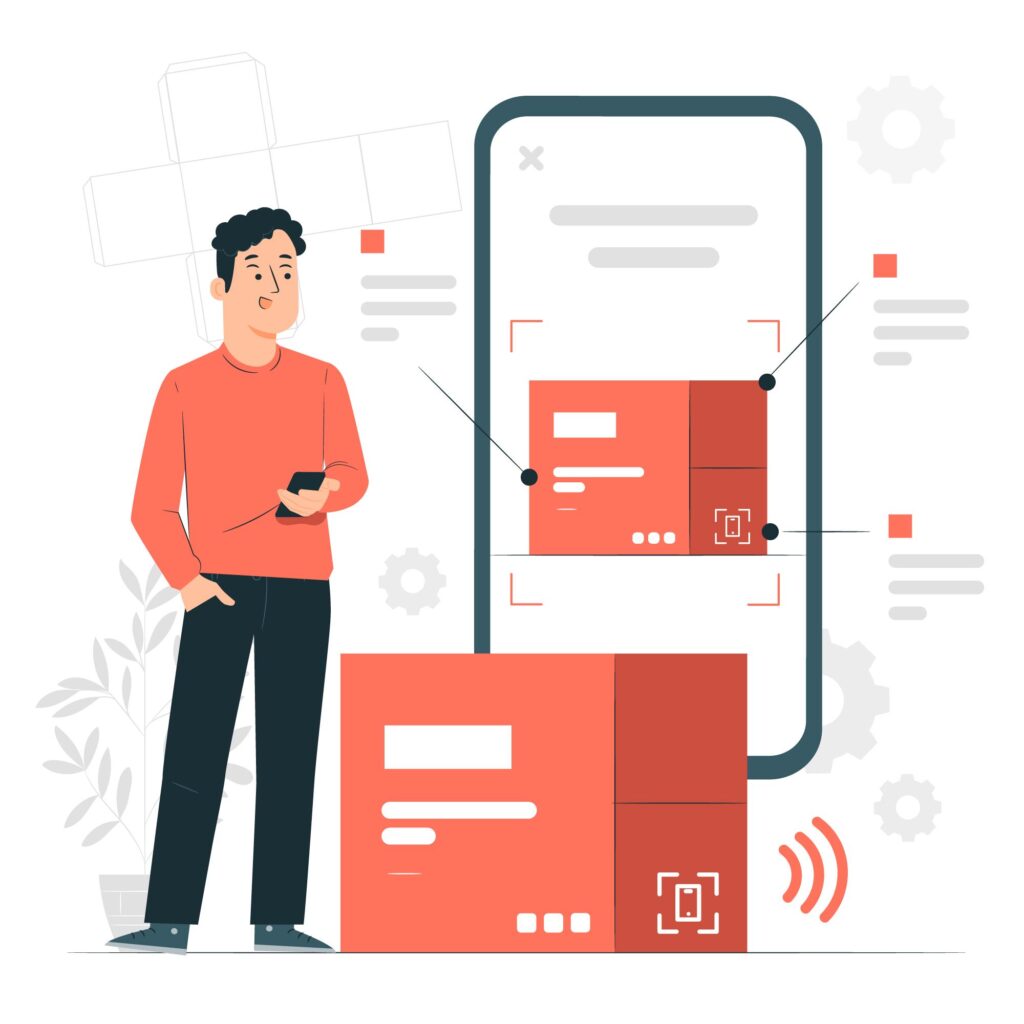
The Building Blocks of Effective Packaging Design
Packaging design encompasses various components that work together to create a cohesive and impactful experience. Here’s a breakdown of the fundamental elements:
- Visual Identity: This includes your brand logo, color palette, typography, and any visual elements that represent your brand. Maintaining consistency across all packaging elements reinforces brand recognition and builds trust with consumers.
- Information Hierarchy: Clearly communicate essential product information, such as brand name, product description, ingredients, and nutritional facts, using a well-organized layout and easy-to-read fonts.
- Functionality: Packaging should not only be aesthetically pleasing but also functional. Consider factors like ease of opening, storage requirements, and product protection during transportation.
- Sustainability: Consumers are increasingly conscious of environmental impact. Opting for eco-friendly materials, recyclable packaging, and minimal printing can enhance your brand image and resonate with environmentally responsible consumers.
4 Key Considerations for Captivating Packaging Design
While aesthetics play a significant role, successful packaging design goes beyond visual appeal. Here are four crucial considerations to keep in mind:
- Target Audience: Understanding your target audience’s demographics, preferences, and purchasing behaviors is essential. Tailor your design elements, including color schemes, imagery, and messaging, to resonate with their specific needs and expectations.
- Brand Identity: Your packaging should seamlessly integrate with your overall brand identity. This ensures consistency across all marketing channels and strengthens brand recognition. Consider how the design elements on your packaging complement your brand logo, website, and marketing materials.
- Product Positioning: Clearly communicate the unique selling proposition (USP) of your product through your packaging design. Highlight what sets your product apart from competitors and emphasize its key benefits and features.
- Shelf Appeal: In a crowded retail environment, your packaging needs to grab attention quickly. Utilize bold colors, captivating visuals, and strategic placement of key information to make your product stand out on store shelves.
Elements that Spark Allure: Making Your Packaging Irresistible
Beyond functionality and information, incorporating design elements that evoke emotions and trigger purchase decisions can elevate your packaging to the next level. Here are some tactics to consider:
- Storytelling: Use visuals and messaging that tell a story about your brand or product. This can connect with consumers on an emotional level and create a memorable brand experience.
- Sensory Appeal: Engage multiple senses by incorporating textures, finishes, or even scents (if appropriate) to create a unique and interactive experience for consumers.
- Minimalism: Sometimes, less is more. A clean and minimalist design can exude sophistication and allow your product to take center stage.
- Surprise and Delight: Incorporate unexpected elements, such as hidden compartments, interactive features, or playful graphics, to surprise and delight consumers, fostering brand loyalty and positive word-of-mouth.
Remember, effective packaging design is a strategic blend of functionality, aesthetics, and emotional connection. By carefully considering these elements and tailoring your design to your target audience and brand identity, you can unlock the creative potential of your packaging and create a powerful tool that drives sales and strengthens your brand presence.

Elevate Your Brand with Professional Print and Packaging Design
Creating impactful and visually stunning packaging requires expertise and an understanding of design principles. Webchirpy offers comprehensive print and packaging design services to help you bring your creative vision to life. Our team of experienced designers will collaborate with you to develop packaging solutions that not only showcase your product but also effectively communicate your brand story and resonate with your target audience.
Contact us today and unlock the full potential of your brand through captivating and effective print and packaging design.
- Visual Identity: This includes your brand logo, color palette, typography, and any visual elements that represent your brand. Maintaining consistency across all packaging elements reinforces brand recognition and builds trust with consumers.
-
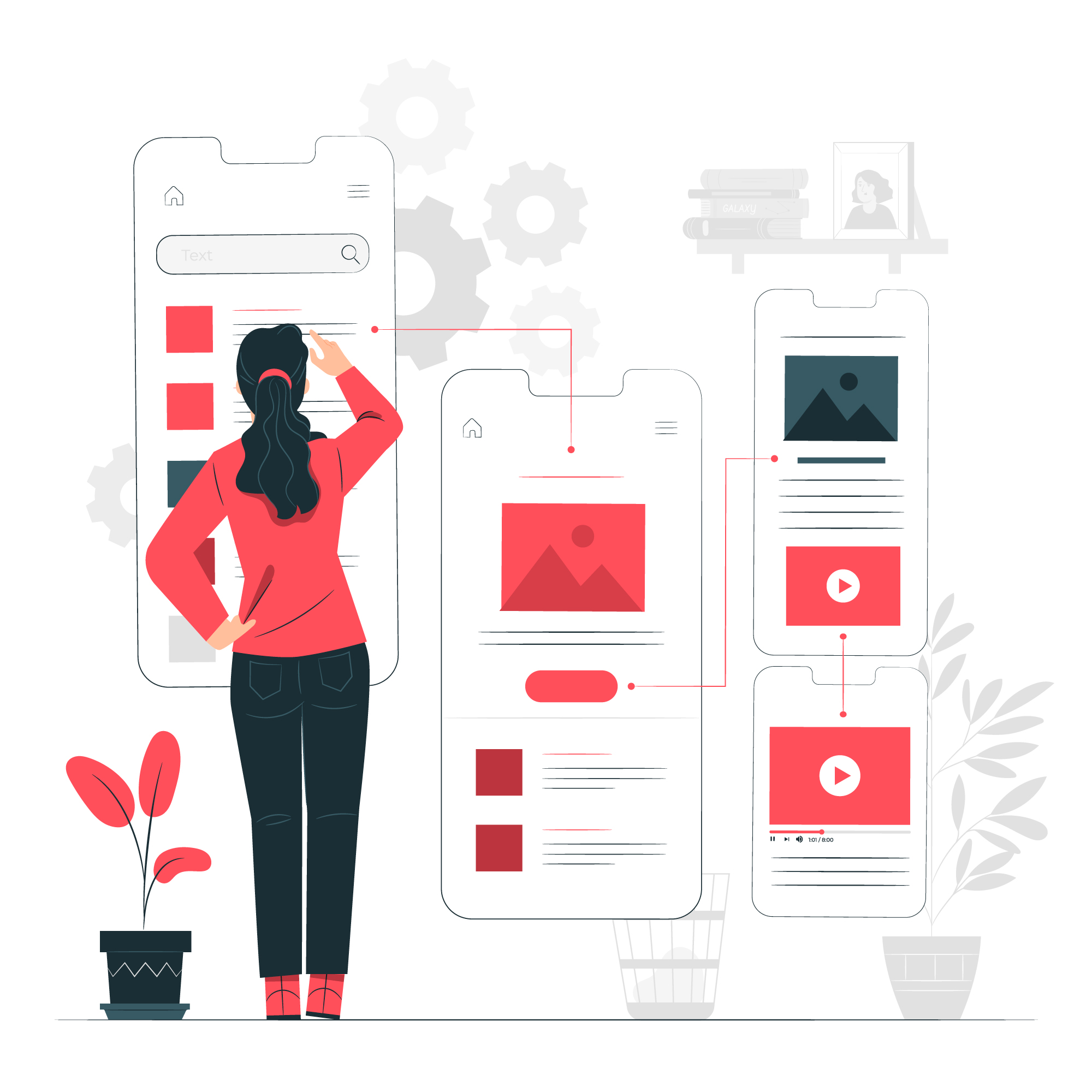
In today’s digital landscape, user experience (UX) reigns supreme. Websites and applications that are intuitive, efficient, and enjoyable to navigate stand out from the crowd, fostering user engagement and driving conversions. A crucial element in achieving this is crafting compelling user flows. What is a user flow? A user flow is a visual representation of the steps a user takes to complete a specific task on your website or app. It maps out the user’s journey, from entering the platform to achieving their desired outcome, such as making a purchase, signing up for a service, or finding specific information. Why are they essential? Effective user flows offer a multitude of benefits: How to create an effective user flow: Crafting compelling user flows is an ongoing process that requires continuous refinement and improvement. By following these guidelines and prioritizing user needs, you can create a seamless and engaging user flow that drives success for your website or application. Need help crafting exceptional user flows and optimizing your user experience? Webchirpy‘s UI/UX design services can help you create intuitive and user-centric experiences that drive engagement and conversions. Our team of experienced designers will work closely with you to understand your unique needs and goals, developing user flows that streamline the user journey and deliver exceptional results. Contact us today and let us help you craft user flows that captivate your audience and propel your business forward.
Crafting Compelling User Flows
In today’s digital landscape, user experience (UX) reigns supreme. Websites and applications that are intuitive, efficient, and enjoyable to navigate stand out from the crowd, fostering user engagement and driving conversions. A crucial element in achieving this is crafting compelling user flows.
What is a user flow?
A user flow is a visual representation of the steps a user takes to complete a specific task on your website or app. It maps out the user’s journey, from entering the platform to achieving their desired outcome, such as making a purchase, signing up for a service, or finding specific information.
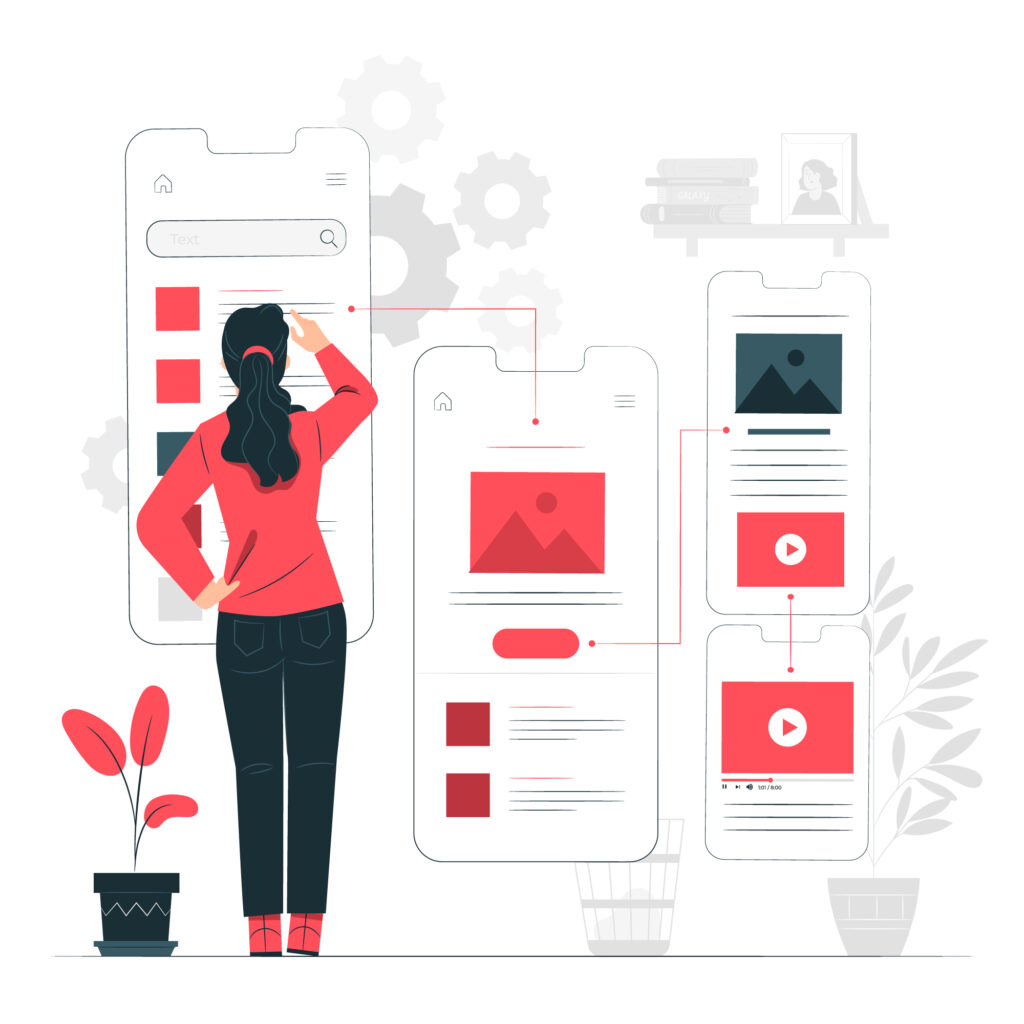
Why are they essential?
Effective user flows offer a multitude of benefits:
- Enhanced user experience: Clear and streamlined user flows guide users toward their goals effortlessly, minimizing frustration and confusion.
- Increased conversions: By removing roadblocks and optimizing the journey, user flows can significantly improve conversion rates.
- Improved website/app usability: They help identify and address potential usability issues, leading to a more intuitive and user-friendly platform.
- Better communication and collaboration: User flows provide a shared understanding of the user journey among stakeholders, facilitating better communication and collaboration during the design and development process.
How to create an effective user flow:
- Define your target audience and their goals: Understanding your users’ needs and motivations is crucial. Who are you designing for? What are their goals when they visit your platform?
- Identify key user journeys: Map out the different paths users might take to achieve their goals. Focus on the most common and critical journeys.
- Break down each journey into steps: List each action a user takes, from entering the platform to completing the desired task.
- Visualize the flow: Use flowcharts, wireframes, or other visual tools to represent the user journey step-by-step.
- Iterate and test: Gather feedback from users and stakeholders, refine the user flow based on their insights, and conduct usability testing to ensure it functions as intended.
Crafting compelling user flows is an ongoing process that requires continuous refinement and improvement. By following these guidelines and prioritizing user needs, you can create a seamless and engaging user flow that drives success for your website or application.
Need help crafting exceptional user flows and optimizing your user experience?
Webchirpy‘s UI/UX design services can help you create intuitive and user-centric experiences that drive engagement and conversions. Our team of experienced designers will work closely with you to understand your unique needs and goals, developing user flows that streamline the user journey and deliver exceptional results.
Contact us today and let us help you craft user flows that captivate your audience and propel your business forward. - Enhanced user experience: Clear and streamlined user flows guide users toward their goals effortlessly, minimizing frustration and confusion.
-
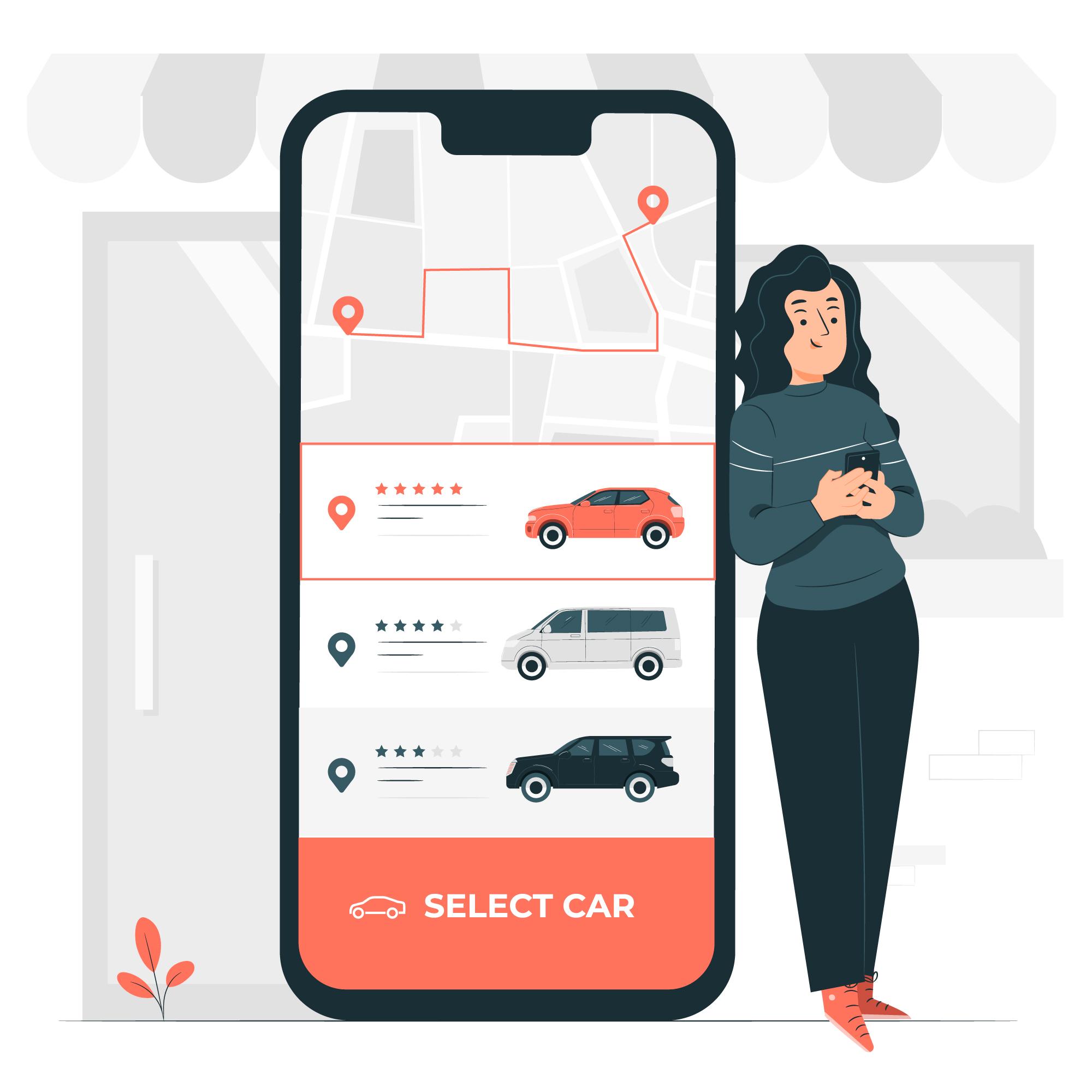
The rise of smartphones and tablets has fundamentally reshaped how we interact with the world around us. Mobile apps, once considered mere entertainment tools, have become an important facet of our lives – from ordering food and hailing rides to managing finances and accessing healthcare. This rapid evolution begs the question: how are they changing the world? A Revolution in Every Pocket Mobile apps have revolutionized the way we consume information and engage with services. Gone are the days of waiting in line or relying on bulky desktops. Today, with a few taps on our smartphones, we can: Mobile Technology: Reshaping the Business Landscape The impact of mobile apps extends far beyond individual users, transforming the business landscape in several ways: By embracing mobile technology and developing user-friendly app, businesses can gain a competitive edge, build stronger customer relationships, and thrive in the ever-evolving digital landscape. Beyond the Desktop: Advantages of Mobile Apps While traditional desktop applications have served us well, mobile app offer several distinct advantages: In conclusion, mobile apps have become an essential part of our lives, shaping the way we interact with the world, conduct business, and access information. As mobile technology continues to evolve, we can expect even more innovative and transformative applications to emerge, further blurring the lines between the physical and digital worlds. Ready to harness the power of mobile app for your business? We offer comprehensive mobile app development services, from conceptualization and design to development and deployment. Our team of experienced professionals can help you create a custom mobile app that meets your specific needs and goals, driving engagement, boosting efficiency, and propelling your business forward in the mobile era. Contact Webchirpy today and discover how mobile app can transform your business.
The Future is Mobile: How Mobile Apps are Transforming Industries
The rise of smartphones and tablets has fundamentally reshaped how we interact with the world around us. Mobile apps, once considered mere entertainment tools, have become an important facet of our lives – from ordering food and hailing rides to managing finances and accessing healthcare. This rapid evolution begs the question: how are they changing the world?

A Revolution in Every Pocket
Mobile apps have revolutionized the way we consume information and engage with services. Gone are the days of waiting in line or relying on bulky desktops. Today, with a few taps on our smartphones, we can:
- Access instant information: News, weather updates, and educational resources are readily available at our fingertips, fostering a more informed and connected society.
- Simplify daily tasks: From managing finances and booking appointments to grocery shopping and ordering food, apps streamline everyday activities, saving us time and effort.
- Enhance communication and collaboration: Messaging apps, social media platforms, and video conferencing tools connect us with friends, family, and colleagues across the globe, fostering stronger relationships and facilitating collaboration.
- Empower individuals and communities: Apps provide platforms for citizen journalism and fundraising campaigns, empowering individuals and communities to make a difference.
Mobile Technology: Reshaping the Business Landscape
The impact of mobile apps extends far beyond individual users, transforming the business landscape in several ways:
- Increased customer engagement: Businesses can leverage mobile apps to interact directly with customers, providing personalized experiences, loyalty programs, and real-time updates.
- Enhanced operational efficiency: Mobile apps can streamline internal processes, improve communication within teams, and facilitate data collection and analysis, leading to increased efficiency and productivity.
- New revenue streams: Mobile apps open doors to innovative business models, such as in-app purchases, subscription services, and location-based marketing, generating new revenue streams and expanding market reach.
- Improved brand awareness and marketing: They provide businesses with a powerful platform to showcase their brand, engage with potential customers, and launch targeted marketing campaigns.
By embracing mobile technology and developing user-friendly app, businesses can gain a competitive edge, build stronger customer relationships, and thrive in the ever-evolving digital landscape.
Beyond the Desktop: Advantages of Mobile Apps
While traditional desktop applications have served us well, mobile app offer several distinct advantages:
- Accessibility: Mobile apps are readily available anywhere, anytime, as long as you have your smartphone. This eliminates the need for bulky laptops or desktops, offering greater convenience and flexibility.
- Personalization: Mobile apps can leverage user data and preferences to personalize the experience, tailoring content, recommendations, and features to individual needs.
- Location awareness: Mobile apps can utilize GPS technology to provide location-based services, such as navigation, nearby recommendations, and augmented reality experiences.
- Seamless integration: Mobile apps can seamlessly integrate with other devices and platforms, allowing for a more interconnected and convenient user experience.
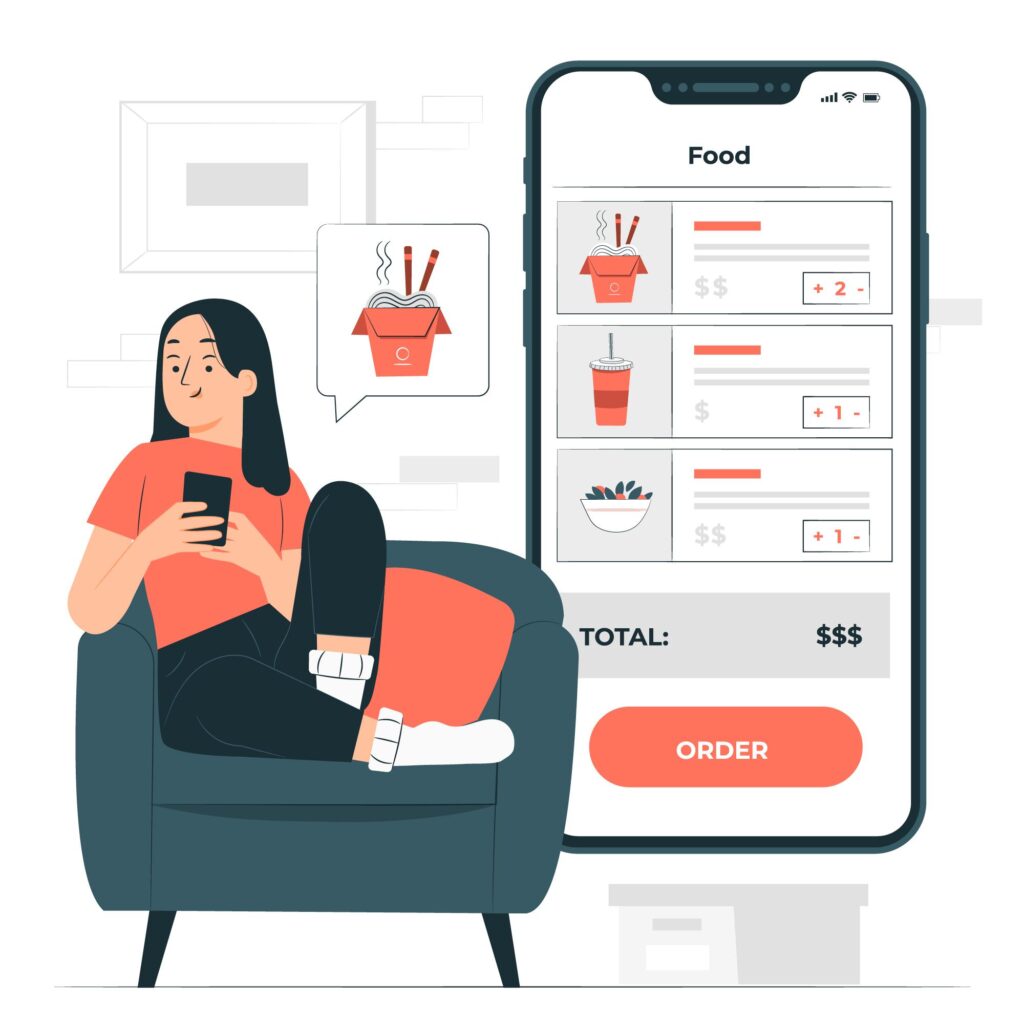
In conclusion, mobile apps have become an essential part of our lives, shaping the way we interact with the world, conduct business, and access information. As mobile technology continues to evolve, we can expect even more innovative and transformative applications to emerge, further blurring the lines between the physical and digital worlds.
Ready to harness the power of mobile app for your business? We offer comprehensive mobile app development services, from conceptualization and design to development and deployment. Our team of experienced professionals can help you create a custom mobile app that meets your specific needs and goals, driving engagement, boosting efficiency, and propelling your business forward in the mobile era.
Contact Webchirpy today and discover how mobile app can transform your business. - Access instant information: News, weather updates, and educational resources are readily available at our fingertips, fostering a more informed and connected society.
-
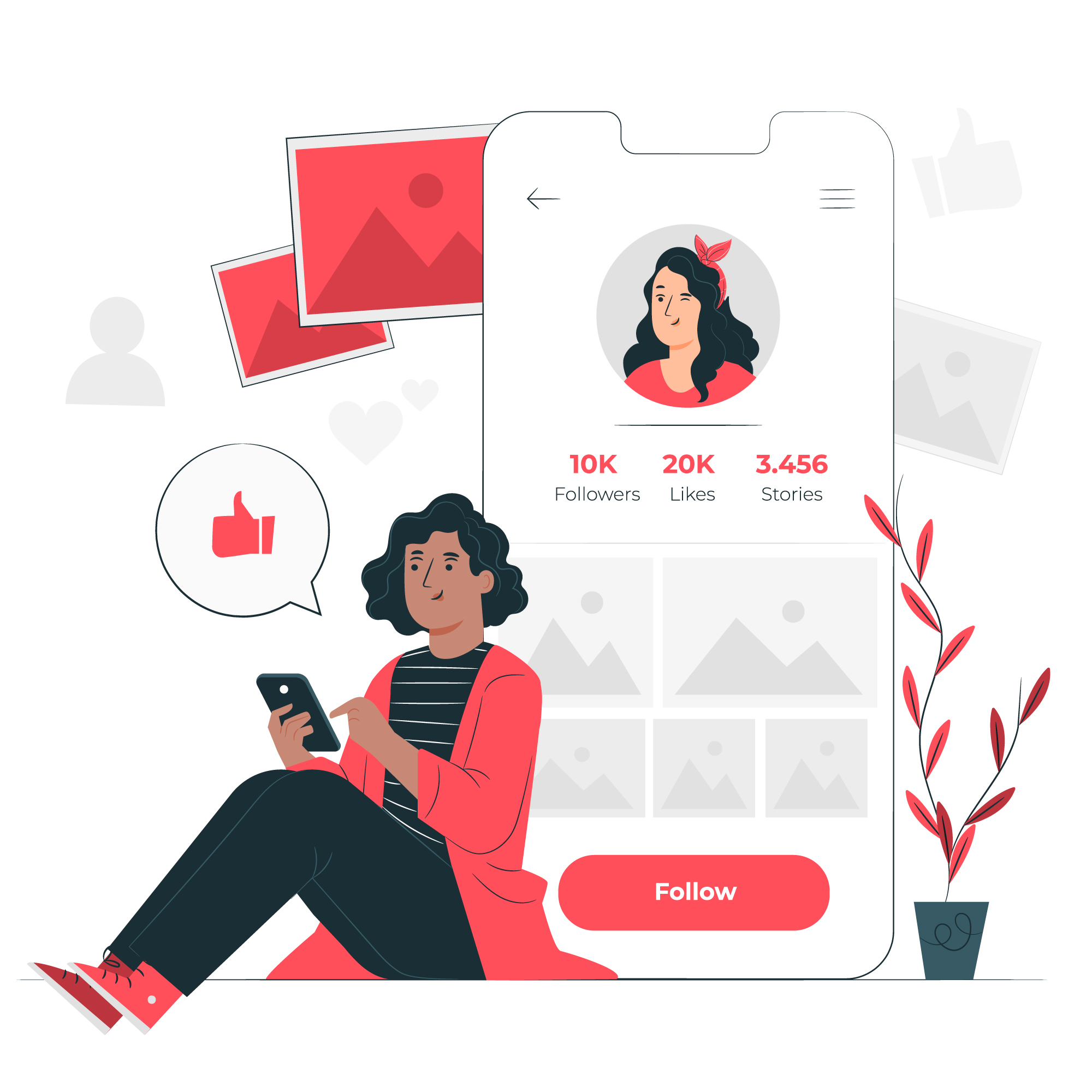
For decades, celebrity endorsements have been a cornerstone of marketing campaigns. Big-name actors, athletes, and musicians were seen as the ultimate stamp of approval, influencing consumer decisions and boosting brand awareness. However, the marketing landscape is undergoing a significant shift. Today, social media influencers are rapidly replacing celebrities as the go-to marketing partners for brands. Why the Shift? The rise of social media has created a new type of marketing powerhouse: social media influencers. These individuals have cultivated large and engaged audiences on platforms like Instagram, YouTube, and TikTok. They possess a unique ability to connect with their followers on a personal level, fostering trust and authenticity that traditional celebrity endorsements often lack. How Do Influencers Benefit Businesses? Social media influencers offer a multitude of benefits for businesses looking to reach new audiences and achieve marketing goals. Here are some key ways influencers can positively impact your brand: What is the Role of Social Media Influencers in Business? Social media influencers play a multifaceted role in the business world, acting as brand advocates, content creators, and marketing partners. They can: Benefits of Collaborating with Social Media Influencers There are numerous advantages to partnering with social media influencers for your marketing efforts. Here are some of the most compelling benefits: Conclusion: The Influencer Marketing Revolution The rise of social media influencers is revolutionizing the marketing landscape. As consumers become increasingly wary of traditional advertising, brands are turning to influencers to build trust, connect with audiences, and achieve marketing objectives. By leveraging the power of influencer marketing, businesses can gain a significant competitive edge and establish themselves as leaders in their respective industries. Partner with Webchirpy for Effective Influencer Marketing Campaigns At Webchirpy, we understand the immense potential of influencer marketing and can help you develop and execute successful campaigns that deliver real results. Our team of experienced digital marketing professionals can help you identify the right influencers, negotiate partnerships, and create engaging content that resonates with your target audience. Contact us today and let us help you unlock the power of influencer marketing to take your brand to the next level.
Forget Celebrity Endorsements, Social Media Influencers Are Taking Center Stage!
For decades, celebrity endorsements have been a cornerstone of marketing campaigns. Big-name actors, athletes, and musicians were seen as the ultimate stamp of approval, influencing consumer decisions and boosting brand awareness. However, the marketing landscape is undergoing a significant shift. Today, social media influencers are rapidly replacing celebrities as the go-to marketing partners for brands.

Why the Shift?
The rise of social media has created a new type of marketing powerhouse: social media influencers. These individuals have cultivated large and engaged audiences on platforms like Instagram, YouTube, and TikTok. They possess a unique ability to connect with their followers on a personal level, fostering trust and authenticity that traditional celebrity endorsements often lack.
How Do Influencers Benefit Businesses?
Social media influencers offer a multitude of benefits for businesses looking to reach new audiences and achieve marketing goals. Here are some key ways influencers can positively impact your brand:
- Increased Brand Awareness: Collaborating with influencers exposes your brand to a wider audience, particularly within their established follower base. This can significantly boost brand recognition and recall.
- Enhanced Credibility and Trust: Consumers are increasingly skeptical of traditional advertising methods. Influencer endorsements, however, can feel more genuine and trustworthy, as influencers often share their honest opinions and experiences with products or services.
- Targeted Marketing: Influencers often cater to specific niches or demographics, allowing brands to target their ideal customer base with greater precision. This ensures your marketing message reaches the right people at the right time.
- Improved Brand Engagement: Influencers are experts at creating engaging content that resonates with their audience. Partnering with them can help you generate excitement and interest around your brand, leading to increased engagement and interaction.
- Content Creation: Influencers are skilled content creators who can develop unique and engaging content featuring your brand. This can be a valuable asset, saving you time and resources while generating high-quality content for your marketing campaigns.
What is the Role of Social Media Influencers in Business?
Social media influencers play a multifaceted role in the business world, acting as brand advocates, content creators, and marketing partners. They can:
- Promote products and services: Influencers can showcase your offerings through reviews, tutorials, and other creative content formats, effectively demonstrating the value proposition to their audience.
- Drive website traffic and sales: By generating excitement and interest, influencers can encourage their followers to visit your website or make purchases, directly impacting your bottom line.
- Build brand loyalty: Influencers who consistently deliver positive experiences with your brand can foster trust and loyalty among their audience, leading to repeat customers and brand advocates.
- Humanize your brand: Influencers can add a personal touch to your brand image, making it more relatable and approachable to consumers.
Benefits of Collaborating with Social Media Influencers
There are numerous advantages to partnering with social media influencers for your marketing efforts. Here are some of the most compelling benefits:
- Cost-effective: Compared to traditional celebrity endorsements, influencer marketing can be significantly more cost-effective, especially when targeting micro-influencers with engaged communities.
- Measurable results: Influencer marketing campaigns can be tracked and measured through various metrics, allowing you to assess the effectiveness of your collaboration and optimize future campaigns for better results.
- Authentic reach: Influencers often have genuine connections with their audience, leading to more authentic engagement and brand advocacy compared to traditional advertising methods.
- Increased brand advocacy: When influencers become vocal advocates for your brand, they can significantly amplify your message and reach a wider audience organically.

Conclusion: The Influencer Marketing Revolution
The rise of social media influencers is revolutionizing the marketing landscape. As consumers become increasingly wary of traditional advertising, brands are turning to influencers to build trust, connect with audiences, and achieve marketing objectives. By leveraging the power of influencer marketing, businesses can gain a significant competitive edge and establish themselves as leaders in their respective industries.
Partner with Webchirpy for Effective Influencer Marketing Campaigns
At Webchirpy, we understand the immense potential of influencer marketing and can help you develop and execute successful campaigns that deliver real results. Our team of experienced digital marketing professionals can help you identify the right influencers, negotiate partnerships, and create engaging content that resonates with your target audience.
Contact us today and let us help you unlock the power of influencer marketing to take your brand to the next level. - Increased Brand Awareness: Collaborating with influencers exposes your brand to a wider audience, particularly within their established follower base. This can significantly boost brand recognition and recall.
-

The meta-verse, a realm of interconnected virtual worlds, is set to revolutionize the way we interact with technology. This immersive environment transcends the limitations of traditional 2D interfaces, presenting designers with a unique challenge and opportunity to craft entirely new user experiences (UX). In this blog post, we will delve into the transformative impact of the meta-verse on UX, exploring how it is reshaping design principles and charting the course for our future digital interactions. Embracing the Third Dimension: Design for Spatial Experiences Traditionally, UX design has focused on two-dimensional interfaces like websites and mobile apps. The meta-verse, however, introduces a three-dimensional canvas, demanding a paradigm shift in design thinking. Designers must now consider not just visual elements but also spatial relationships, navigation within virtual environments, and the integration of multi-sensory stimuli. This requires expertise in 3D modeling, animation, and the understanding of how users perceive and interact within physical spaces. Beyond Screens: Redefining User Input and Interaction The meta-verse breaks free from the constraints of traditional input methods like keyboards and touchscreens. New forms of interaction, such as gesture recognition, voice commands, and haptic feedback, are coming to the forefront. Designers need to carefully consider how these input methods can be seamlessly integrated into the user experience, ensuring intuitiveness and fostering a sense of natural engagement within the virtual world. Building Social Connections: Fostering Community and Collaboration The meta-verse is envisioned as a social hub, facilitating real-time interactions and fostering a sense of community. UX designers play a crucial role in creating virtual spaces that encourage meaningful connections and collaboration. This involves designing intuitive communication tools, virtual meeting spaces, and collaborative platforms that cater to diverse social needs and preferences within the metaverse. Personalization and Adaptability: Tailoring the Metaverse Experience A key aspect of UX in the metaverse is personalization. Designers can leverage user data and preferences to tailor virtual environments and experiences to individual needs. This might involve customizing avatars, curating content feeds, and dynamically adjusting the virtual world based on user behavior and preferences. Shaping the Future: The Metaverse and Beyond The impact of the meta-verse extends far beyond the realm of UX design. It has the potential to revolutionize various aspects of our lives, from work and education to entertainment and social interaction. As this virtual world continues to develop, designers will play a pivotal role in shaping its future, ensuring that it remains user-centric, ethical, and accessible for all. Need help crafting UI UX? Webchirpy‘s UI/UX design services can help you create intuitive and user-centric experiences. Our team of experienced designers will work closely with you to understand your unique needs and goals, developing user flows that streamline the user journey and deliver exceptional results. Contact us today and let us help you craft user flows that captivate your audience and propel your business forward.
How Meta-verse is Reshaping UX
The meta-verse, a realm of interconnected virtual worlds, is set to revolutionize the way we interact with technology. This immersive environment transcends the limitations of traditional 2D interfaces, presenting designers with a unique challenge and opportunity to craft entirely new user experiences (UX). In this blog post, we will delve into the transformative impact of the meta-verse on UX, exploring how it is reshaping design principles and charting the course for our future digital interactions.
Embracing the Third Dimension: Design for Spatial Experiences
Traditionally, UX design has focused on two-dimensional interfaces like websites and mobile apps. The meta-verse, however, introduces a three-dimensional canvas, demanding a paradigm shift in design thinking. Designers must now consider not just visual elements but also spatial relationships, navigation within virtual environments, and the integration of multi-sensory stimuli. This requires expertise in 3D modeling, animation, and the understanding of how users perceive and interact within physical spaces.

Beyond Screens: Redefining User Input and Interaction
The meta-verse breaks free from the constraints of traditional input methods like keyboards and touchscreens. New forms of interaction, such as gesture recognition, voice commands, and haptic feedback, are coming to the forefront. Designers need to carefully consider how these input methods can be seamlessly integrated into the user experience, ensuring intuitiveness and fostering a sense of natural engagement within the virtual world.
Building Social Connections: Fostering Community and Collaboration
The meta-verse is envisioned as a social hub, facilitating real-time interactions and fostering a sense of community. UX designers play a crucial role in creating virtual spaces that encourage meaningful connections and collaboration. This involves designing intuitive communication tools, virtual meeting spaces, and collaborative platforms that cater to diverse social needs and preferences within the metaverse.
Personalization and Adaptability: Tailoring the Metaverse Experience
A key aspect of UX in the metaverse is personalization. Designers can leverage user data and preferences to tailor virtual environments and experiences to individual needs. This might involve customizing avatars, curating content feeds, and dynamically adjusting the virtual world based on user behavior and preferences.
Shaping the Future: The Metaverse and Beyond
The impact of the meta-verse extends far beyond the realm of UX design. It has the potential to revolutionize various aspects of our lives, from work and education to entertainment and social interaction. As this virtual world continues to develop, designers will play a pivotal role in shaping its future, ensuring that it remains user-centric, ethical, and accessible for all.
Need help crafting UI UX?
Webchirpy‘s UI/UX design services can help you create intuitive and user-centric experiences. Our team of experienced designers will work closely with you to understand your unique needs and goals, developing user flows that streamline the user journey and deliver exceptional results.
Contact us today and let us help you craft user flows that captivate your audience and propel your business forward. -
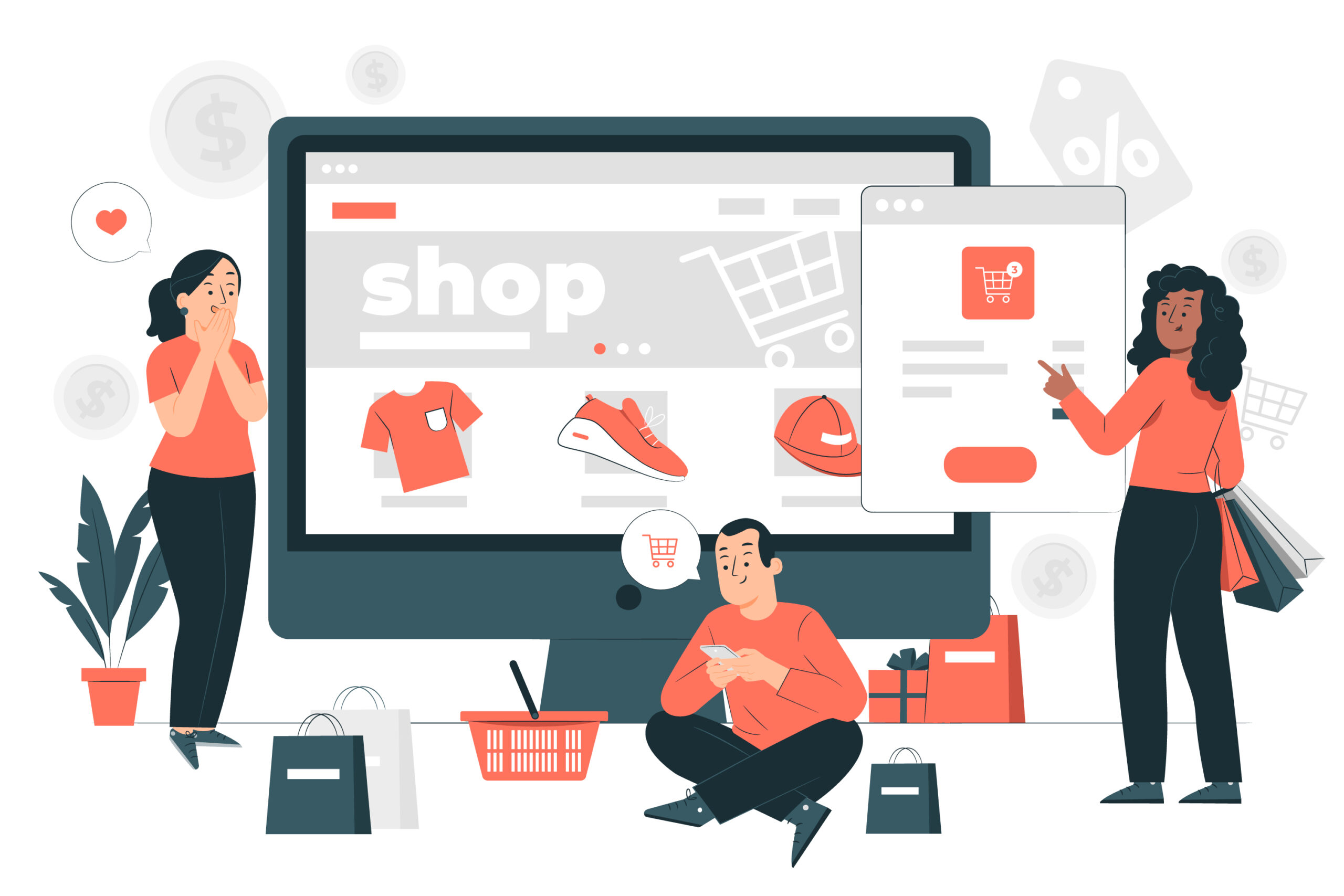
The e-commerce landscape is constantly evolving, driven by technological advancements and shifting consumer behavior. As we look towards the future, it’s crucial to understand the emerging trends and how they will shape the way we shop online. This blog post delves into the exciting future of e-commerce websites, exploring the potential innovations, visionary perspectives, and the vast scope of opportunities for businesses. What Does the Future Hold for E-commerce? Several key trends are set to redefine the e-commerce experience in the coming years. Let’s explore some of the most prominent: Where E-commerce is Headed? The future of e-commerce is not just about implementing individual technologies; it’s about creating a holistic and immersive shopping experience. We can envision a future where: Future Scope of E-commerce and its Benefits for Businesses The future of e-commerce presents a vast and exciting scope for businesses of all sizes. Here are some of the key benefits: However, navigating the ever-evolving e-commerce landscape can be challenging. This is where partnering with a reliable and experienced e-commerce website development service like Webchirpy becomes crucial. Webchirpy offers comprehensive solutions to help businesses build future-proof e-commerce websites. Our team of skilled developers and designers can create customized online stores that are not only visually appealing but also functionally robust and optimized for the latest trends and technologies. With our expertise, businesses can ensure they are well-positioned to capitalize on the vast opportunities that the future of e-commerce holds. By embracing innovation, staying ahead of the curve, and partnering with the right resources, businesses can thrive in the dynamic world of e-commerce and create a compelling online presence that resonates with customers for years to come.
The Future of E-commerce Websites
The e-commerce landscape is constantly evolving, driven by technological advancements and shifting consumer behavior. As we look towards the future, it’s crucial to understand the emerging trends and how they will shape the way we shop online. This blog post delves into the exciting future of e-commerce websites, exploring the potential innovations, visionary perspectives, and the vast scope of opportunities for businesses.
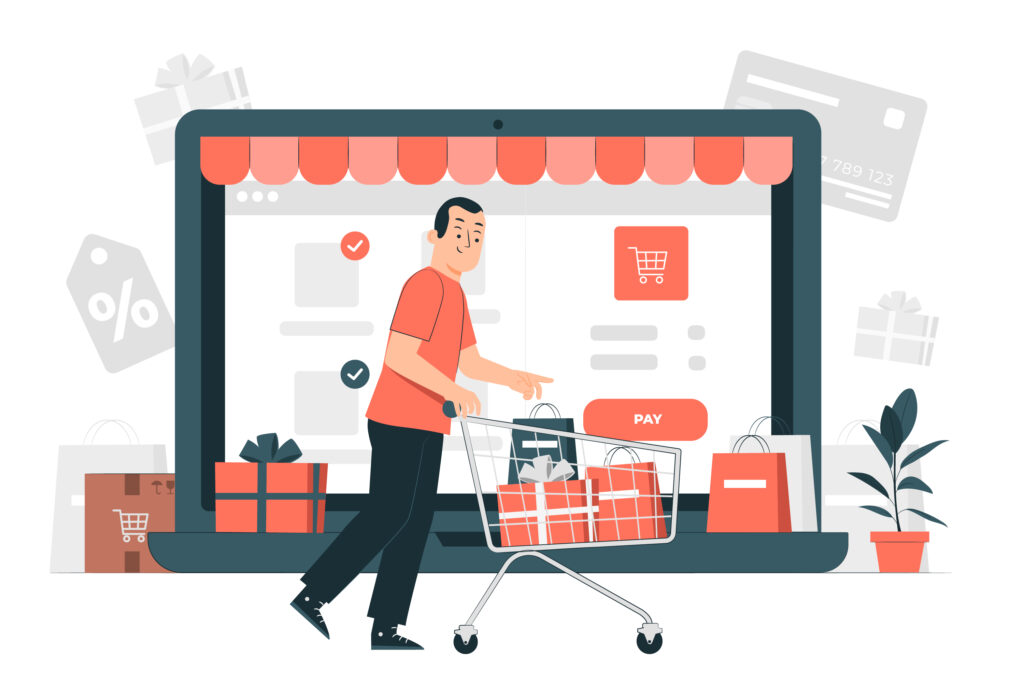
What Does the Future Hold for E-commerce?
Several key trends are set to redefine the e-commerce experience in the coming years. Let’s explore some of the most prominent:
- Hyper-personalization: Imagine a shopping experience tailored specifically to your unique preferences and needs. This is the future of personalization, where AI and machine learning will analyze vast amounts of data to curate product recommendations, offers, and content that resonate deeply with each individual customer.
- Seamless omnichannel experience: The boundaries between online and offline shopping will continue to blur. Customers expect a seamless journey across all touchpoints, from browsing products on their mobile devices to completing purchases in physical stores or vice versa. E-commerce websites will need to integrate seamlessly with other channels to ensure a consistent and convenient experience.
- Voice commerce takes center stage: Voice assistants like Alexa and Google Assistant are becoming increasingly important in our daily lives. As voice technology matures, voice commerce is expected to experience exponential growth. E-commerce websites will need to be optimized for voice search and enable voice-activated features for a more intuitive and hands-free shopping experience.
- Augmented reality (AR) revolutionizes product visualization: AR has the potential to transform the way we interact with products online. Imagine virtually trying on clothes, placing furniture in your living room, or visualizing the scale of an appliance before making a purchase. AR integration will enhance customer engagement, boost confidence in online purchases, and ultimately lead to higher conversion rates.
- Focus on sustainability and ethical practices: Consumers are becoming increasingly conscious of the environmental and social impact of their purchases. E-commerce businesses that prioritize sustainability through eco-friendly packaging, ethical sourcing, and transparent practices will resonate with this growing segment of the market.
Where E-commerce is Headed?
The future of e-commerce is not just about implementing individual technologies; it’s about creating a holistic and immersive shopping experience. We can envision a future where:
- Physical and digital worlds converge: stores will evolve into interactive showrooms, seamlessly blending the physical and digital aspects of shopping. Customers can use AR/VR technologies to interact with products, receive personalized recommendations, and even complete purchases on the spot.
- Social commerce takes center stage: Social media platforms will become even more integrated with the shopping experience. Consumers will be able to discover products, interact with influencers, and make purchases directly within their social media feeds.
- Evolving payment methods: We can expect to see the rise of new and innovative payment methods, such as cryptocurrency and biometric authentication, offering greater convenience and security to customers.
Future Scope of E-commerce and its Benefits for Businesses
The future of e-commerce presents a vast and exciting scope for businesses of all sizes. Here are some of the key benefits:
- Reaching a wider audience: E-commerce platforms remove geographical barriers, allowing businesses to tap into a global customer base.
- Enhanced customer engagement: Personalized experiences, interactive features, and omnichannel strategies will foster deeper customer engagement and loyalty.
- Increased sales and profitability: By leveraging data-driven insights and optimizing the customer journey, businesses can improve conversion rates and boost their bottom line.
- Greater operational efficiency: Automation, AI-powered logistics, and streamlined fulfillment processes can lead to significant cost savings and operational efficiency.

However, navigating the ever-evolving e-commerce landscape can be challenging. This is where partnering with a reliable and experienced e-commerce website development service like Webchirpy becomes crucial.
Webchirpy offers comprehensive solutions to help businesses build future-proof e-commerce websites. Our team of skilled developers and designers can create customized online stores that are not only visually appealing but also functionally robust and optimized for the latest trends and technologies. With our expertise, businesses can ensure they are well-positioned to capitalize on the vast opportunities that the future of e-commerce holds.
By embracing innovation, staying ahead of the curve, and partnering with the right resources, businesses can thrive in the dynamic world of e-commerce and create a compelling online presence that resonates with customers for years to come. - Hyper-personalization: Imagine a shopping experience tailored specifically to your unique preferences and needs. This is the future of personalization, where AI and machine learning will analyze vast amounts of data to curate product recommendations, offers, and content that resonate deeply with each individual customer.
Webchirpy – Global Branding, UI UX Design & Marketing Agency


 From Coimbatore
From Coimbatore